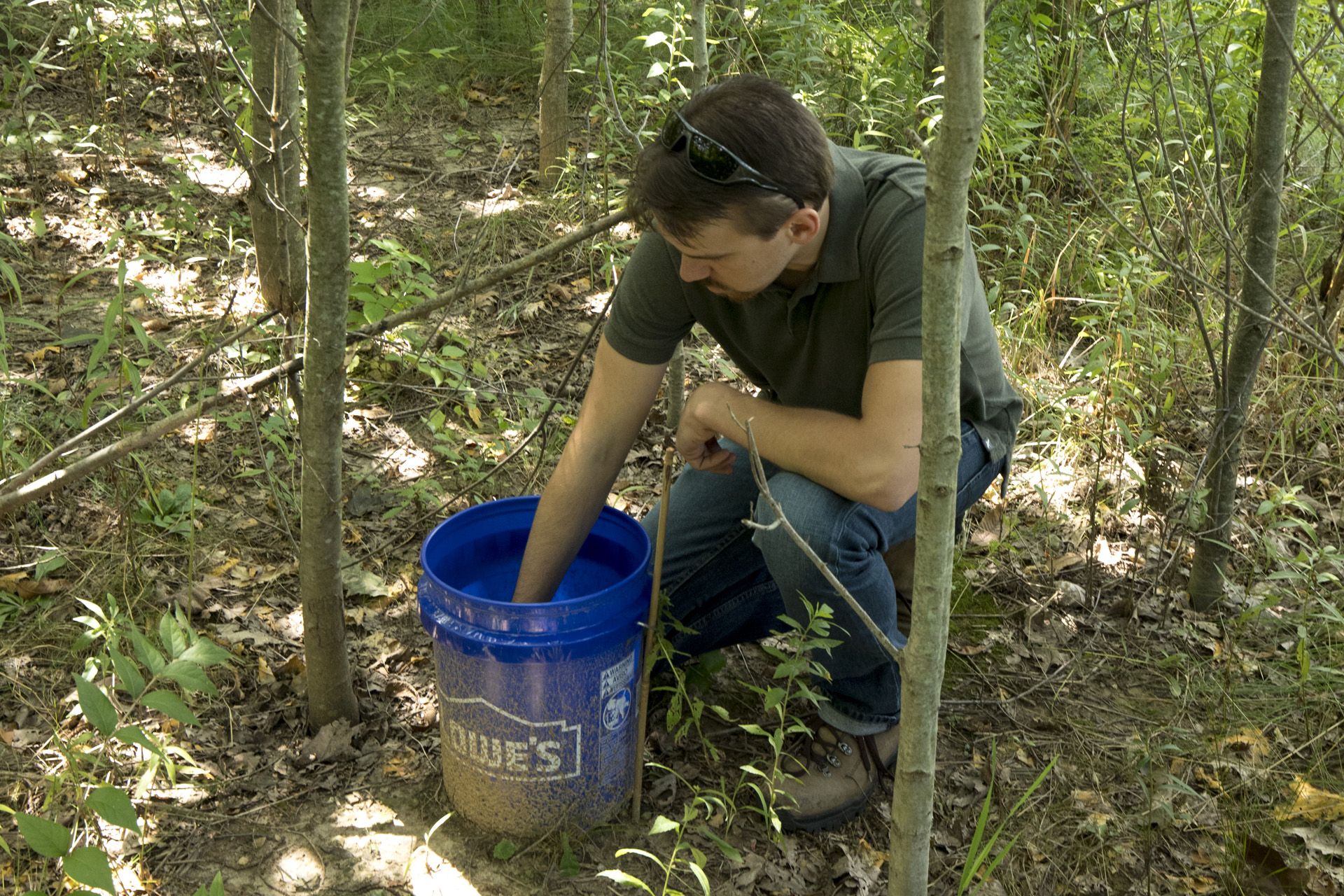My dissertation research focused on the long-term C storage capacity of forests that underwent varying intensities of human-induced disturbance. Contrary to traditional understanding, recent investigations demonstrate that even very old forests may act as net sinks for atmospheric CO2. These studies suggest canopy structural complexity may promote sustained C uptake. To test this hypothesis I quantified changes in canopy structure using ground-based light detection and ranging (LiDAR) in a chronosequence of north temperate forests spanning two centuries of succession and a gradient of anthropogenic disturbance intensity. My research demonstrated that canopy structural complexity increases with stand age and that higher rates of wood growth are associated with more structurally complex canopies (Hardiman et al. 2011, 2013a). Further investigation, during which I mentored two students in the National Science Foundation’s Research Experience for Undergraduates (NSF REU) program, revealed that increasing canopy structural complexity drives higher light and nitrogen use efficiency. This study indicates that old forests with their more structurally complex canopies have the potential to store more C with the same quantity of resources than young stands with structurally simpler canopies (Gough et al. 2013, Hardiman et al. 2013b). These results have important implications for the conservation value of old forests and suggest that active management of forests can promote development of canopy structural complexity leading to higher rates of C storage.
I also studied perturbations in nitrogen (N) cycling within an experimentally disturbed forest. In this experiment, we accelerated forest succession by stem-girdling to kill the canopy-dominant early successional species (~35% of basal area). High tree mortality rates can disrupt N cycling creating vulnerability to leaching losses of soil N that could constrain the long-term trajectory of forest growth and C storage. Using an array of 135 soil lysimeters deployed throughout both treated and control regions of the forest I found a significant rise in N leaching losses accompanying tree mortality but the magnitude of N losses was insufficient to reduce ecosystem N stocks or limit future forest growth (Hardiman et al. in prep). Retained N boosted leaf area production by surviving trees in treated stands, promoting resilient net C uptake in girdled stands despite high mortality rates (Nave et al. 2011, 2014). These results provide important insights into the short-term resilience of forest biogeochemical cycling during periods of successional transition and moderate disturbance associated with active management methods.



